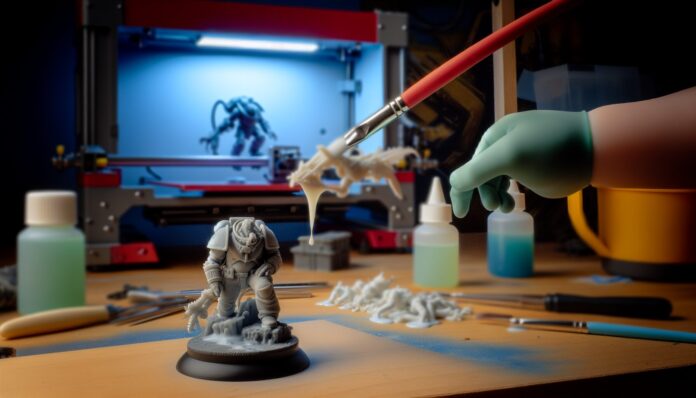3D printing has revolutionized many industries, from aerospace to healthcare—but in the world of tabletop gaming, it’s sparked a different kind of debate. For miniature wargamers, the promise of printing your own armies at home sounds like a dream come true. But is it really as cheap and easy as it seems? Let’s take a closer look at the real costs, challenges, and considerations of 3D printing miniatures for wargames.
The Myth of Cheap 3D Printed Miniatures
At first glance, 3D printing your own miniatures appears to be a cost-effective alternative to buying official models. A resin printer like the Anycubic Photon Mono 2 or Elegoo Mars 4 can be purchased for under $200, and STL files for popular miniatures are often available for free or at low cost online. However, this initial investment is just the tip of the iceberg.
Resin printing requires a range of additional equipment and consumables: isopropyl alcohol for cleaning prints, UV curing stations, nitrile gloves, FEP film replacements, and of course, the resin itself. These recurring costs add up quickly. A single liter of resin can cost between $30 and $50, and depending on the size and detail of your miniatures, that may only yield a handful of models.
Moreover, the learning curve for resin printing is steep. Beginners often face failed prints, misaligned supports, and exposure issues. Each failed print not only wastes resin but also time and effort. For many hobbyists, the frustration and trial-and-error process can be a significant barrier.
Time, Effort, and Post-Processing
Unlike buying a box of miniatures off the shelf, 3D printing is not a plug-and-play experience. Each model must be sliced using software like Lychee or Chitubox, supports must be added manually or automatically, and the print must be monitored throughout the process. A single 28mm miniature can take 4–8 hours to print, depending on the layer height and printer settings.
After printing, the model must be cleaned in isopropyl alcohol, cured under UV light, and often sanded or trimmed to remove support marks. This post-processing stage is messy, time-consuming, and requires a well-ventilated workspace. Safety is also a concern—resin is toxic in its liquid form and must be handled with care.
For hobbyists with limited time or space, these requirements can be a dealbreaker. While the idea of printing an entire army overnight is appealing, the reality is that it takes days or even weeks to produce a full set of miniatures, especially if you’re aiming for high-quality results.
Quality and Legal Considerations
Another factor to consider is the quality of 3D printed miniatures. While modern resin printers can produce impressive detail, they still fall short of the precision and consistency of injection-molded plastic miniatures from companies like Games Workshop. Layer lines, print artifacts, and support scars are common, and achieving a professional finish often requires significant post-processing and painting skill.
There’s also the issue of intellectual property. Many STL files available online are fan-made recreations of copyrighted models. Downloading and printing these files may infringe on the rights of the original creators. While some companies tolerate fan-made content, others actively pursue legal action against unauthorized reproductions. Hobbyists should be cautious and ensure they are using legally obtained files from reputable sources.
When 3D Printing Makes Sense
Despite the challenges, 3D printing can be a valuable tool for certain hobbyists. If you enjoy the technical side of printing, have the time and space to dedicate to the process, and are interested in customizing or kitbashing unique models, then 3D printing offers unparalleled creative freedom. It’s also a great way to prototype terrain, accessories, or custom bases that may not be available commercially.
For those who are already invested in the hobby and want to expand their toolkit, a resin printer can be a worthwhile addition. However, it’s important to approach it with realistic expectations. 3D printing is not a shortcut to cheap armies—it’s a hobby in itself, with its own costs, complexities, and rewards.
In conclusion, while 3D printing has opened exciting new possibilities for miniature wargaming, it’s not the budget-friendly silver bullet it’s often made out to be. For many, the traditional route of buying miniatures remains the more practical and enjoyable option.
Source: wargamer.com

